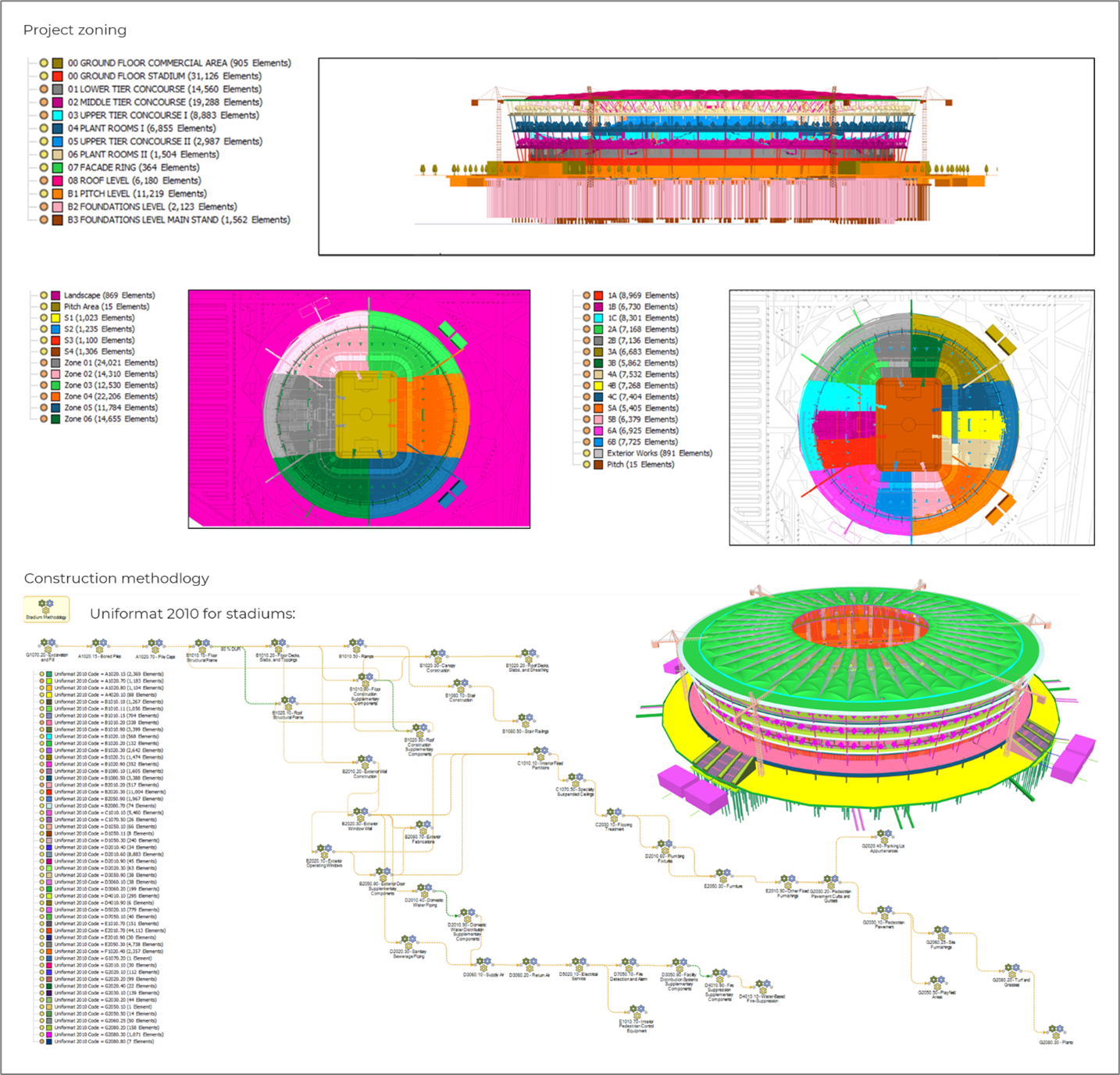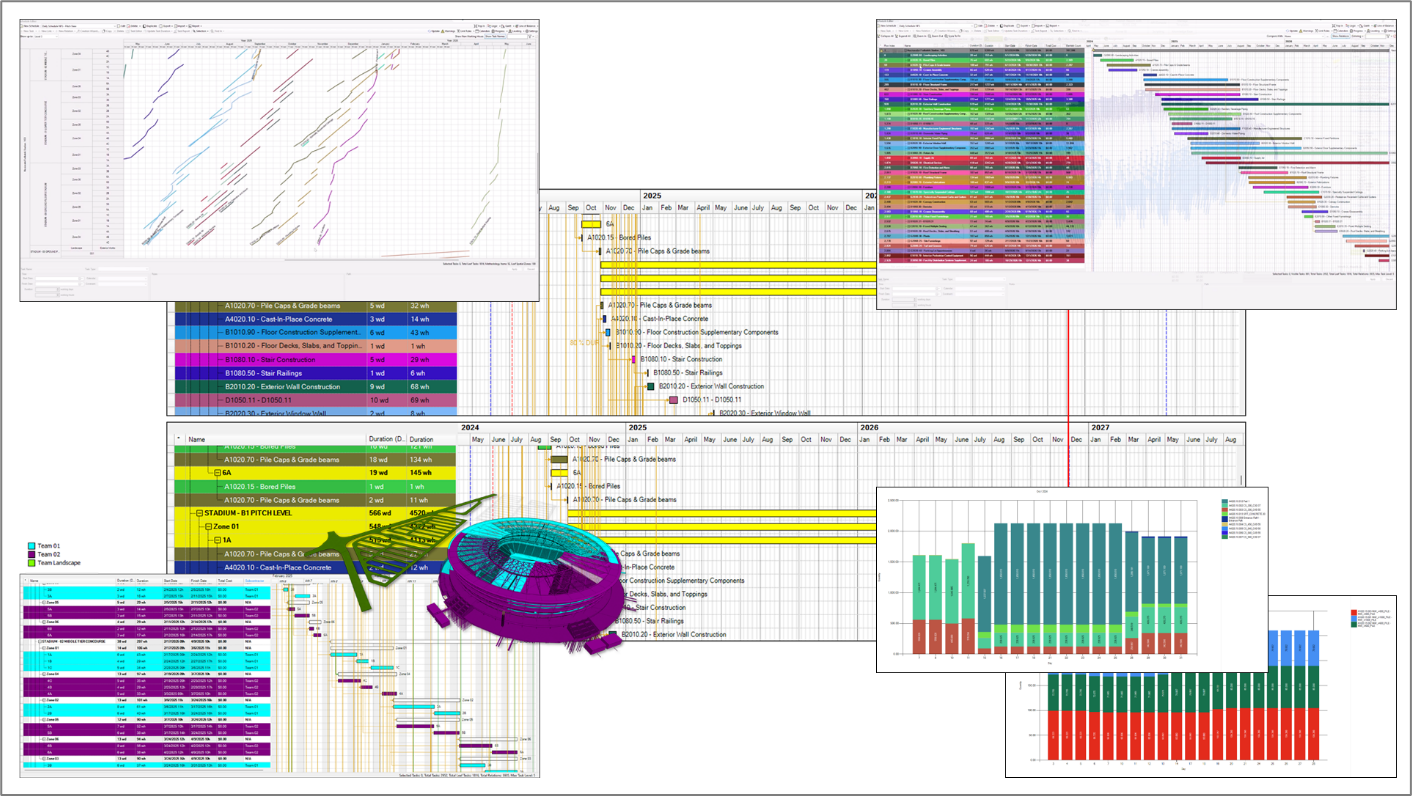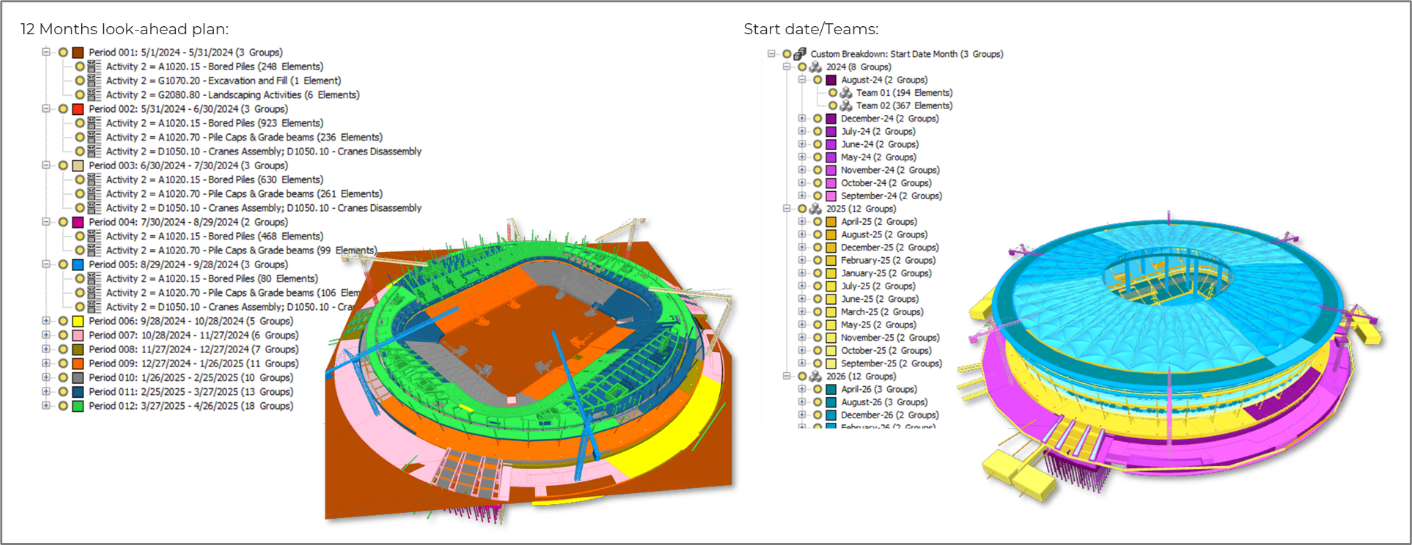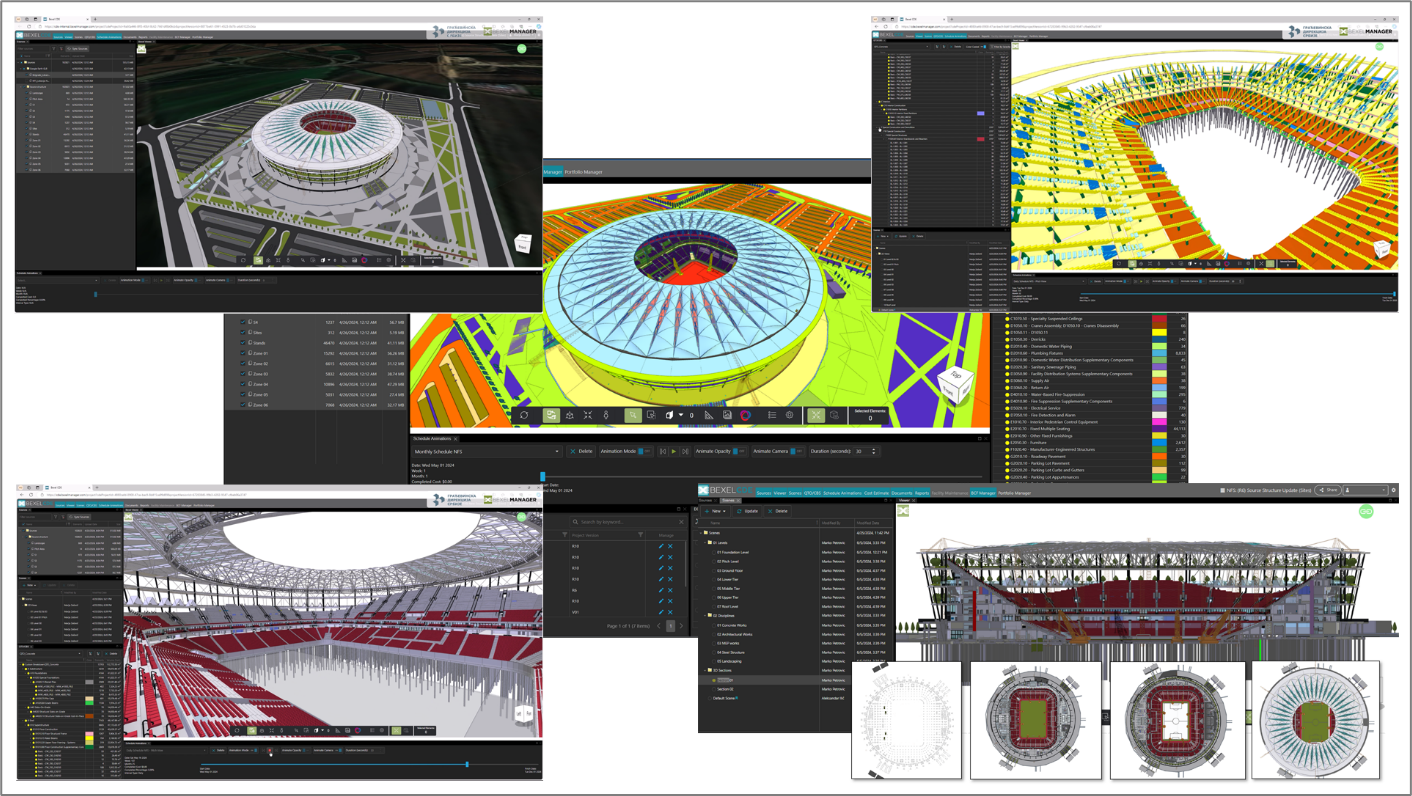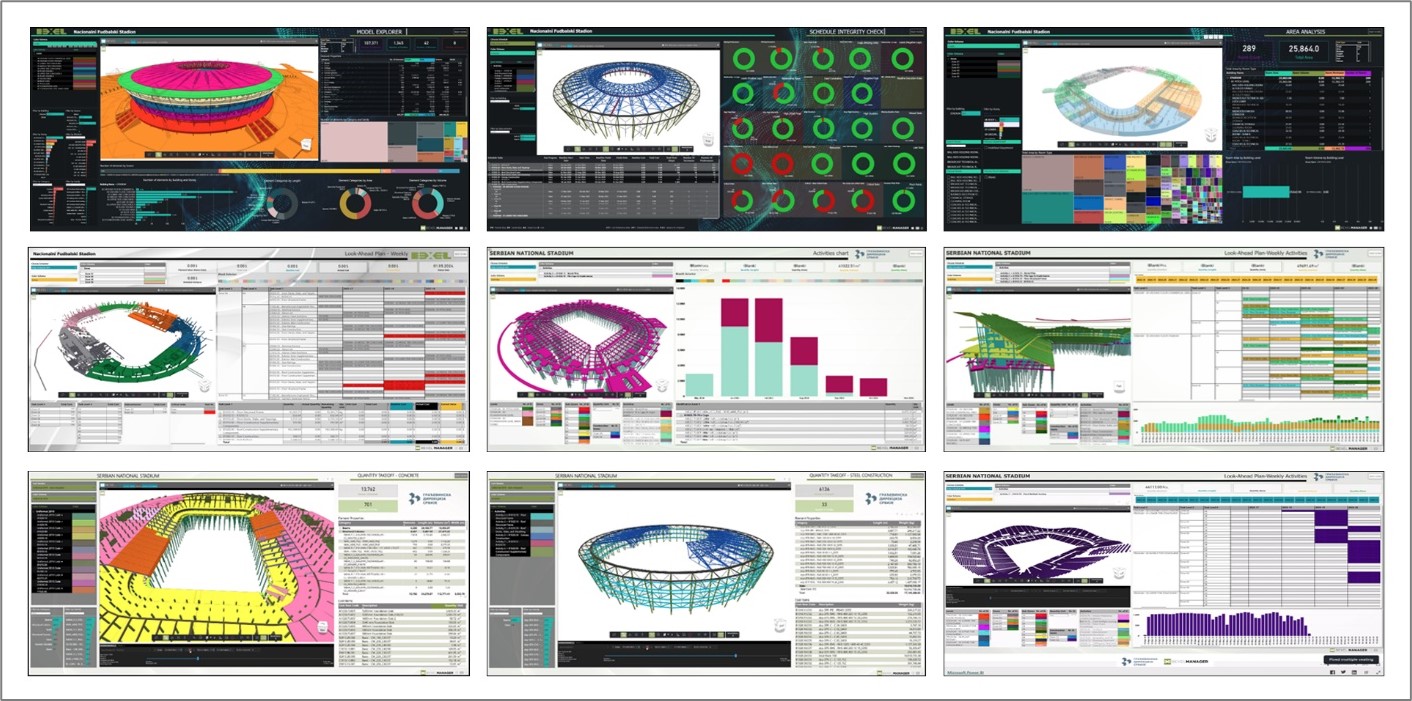The National Football Stadium in Serbia represents modern marvel of architecture and sustainability. This impressive stadium spans 32 hectares and can seat 52,000 spectators, meeting UEFA and FIFA standards for international events. The stadium’s unique facade features lush garden areas, blending nature with cutting-edge design. With 4,500 parking spaces and three levels of facilities, it’s perfect for all types of events, from football matches to concerts. The National Football Stadium is more than just a sports venue; it’s a versatile, eco-friendly hub for various activities.
To ensure the seamless integration of modern technology and BIM processes, BEXEL Manager software played a pivotal role in streamlining the complex workflows involved in the National Football Stadium’s development.
In just two weeks, a comprehensive adjustment, preparation, and analysis of the BIM model were completed using BEXEL Manager software. A cost database and multiple construction schedules, represented as Gantt charts and Lines of Balance (LOB), were generated. To facilitate easier analysis and management, the model was organized using various Custom Breakdown Structures. Numerous calculations were performed based on the types of work and available materials. All data were published on BEXEL CDE for better coordination with other project stakeholders and transferred to Power BI dashboards. As a result, numerous representative visualizations and video materials were obtained, necessary for an easier and better presentation of the project in further development.
Week 01:
First week summary:
- Federated model with 107,556 elements created in BEXEL Manager
- Over 2,000 elements that were split into smaller segments
- 172,440 classification properties added with data enrichment tool
- 1,367 automatically generated cost items in BEXEL Manager Cost Editor
- Generated schedule with 2,952 tasks and 3,935 relations in BEXEL Manager
- 4 different construction schedule versions with different what-if scenarios
Within just the first five days complete preparation and analysis of the model was done. This phase included all necessary model adjustment in authoring tool, coordination of elements, spatial analysis, LOD (Level of detail) and LOI (Level of information) check.
The model was enriched with Uniformat 2010 Codes and Descriptions with built in Data Enrichment tools. A variety of QTO/CBS analyses were performed differentiating the model by levels, zones, sub-zones, teams, etc. The cost database was automatically generated from previously created QTO based on Uniformat 2010 Templates.
By using intelligent scheduling engine projects zones and construction methodologies were defined resulting in creation of initial schedule.
Week 02:
Second week summary:
- 980,268 schedule related properties added using API scripts
- 15 different Custom breakdowns and Quantity Takeoffs created and published to BEXEL CDE
- 118,311 quantity calculations
- 6 versions of schedule published on BEXEL CDE
- 12 Power BI dashboards created and added to BEXEL CDE
- Over 30 video clips were created and used for the final showcase video
During the second week, the construction schedule and Line of Balance (LOB) were optimized. This included editing project and task durations, activity leveling, parallel sequencing, and work execution direction to obtain the first construction simulation.
Based on the updated schedule data, the model was further enriched with additional property values, and the first look-ahead analyses were performed.
The model was published with all necessary data on BEXEL CDE. To improve coordination, the BEXEL CDE platform was enhanced with integrated Google Earth data, scene creation, and defined access rights and roles for the project. Numerous Power BI reports were published. All data from the previous two weeks were used to create visualizations and video materials for easier communication with other project participants.
In just two weeks, the National Football Stadium project demonstrated the remarkable efficiency of BIM-driven workflows and effective collaboration through BEXEL Manager and BEXEL CDE, resulting in faster decision-making, reduced errors, and optimized resource management. This case study highlights how advanced digital solutions can streamline complex construction processes, improve coordination among stakeholders, and elevate overall project outcomes.




